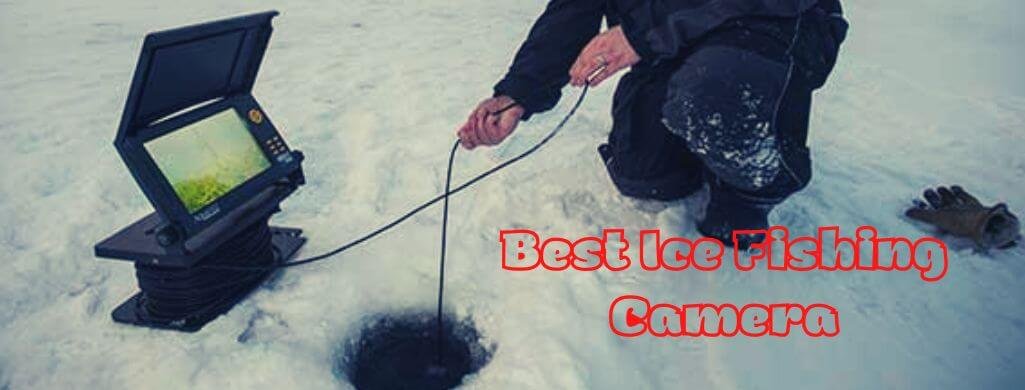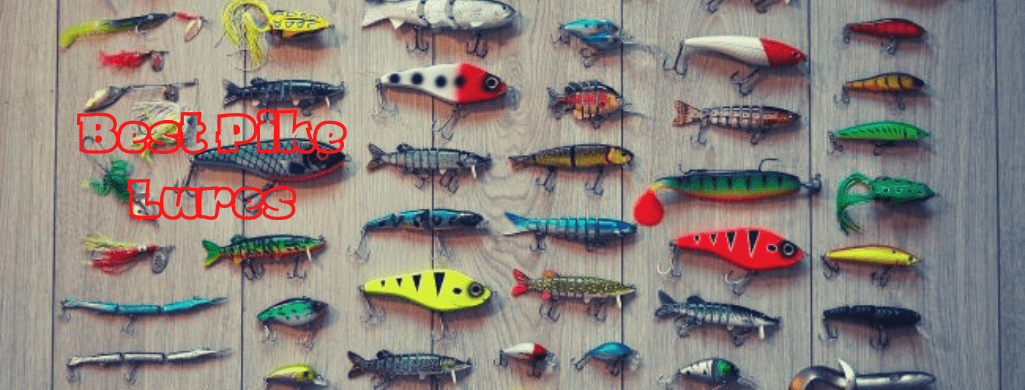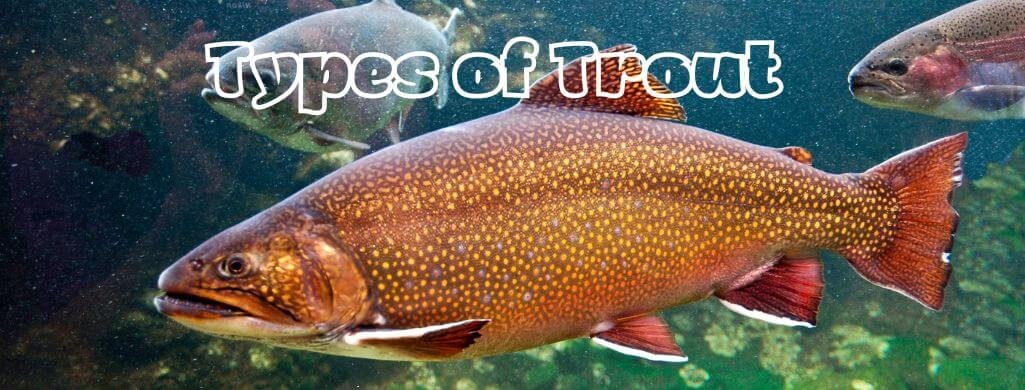
Confused by the types of Trout in North America? This guide will help you find out about different Trout species, learn where they live, and much more.
There are many types of Trout, and they can be found in all sorts of different environments across North America. Here are thirteen of the most common Trout species.
Table of Contents
What is a Trout?
A trout is a freshwater fish that belongs to the Salmonidae family, which includes salmon, char, and grayling. Trout are closely related to salmon and can be found in cold-water rivers and streams all over the world. There are many different types of trout, each with its own unique appearance and behavior.
Trout are popular sports fish, and are often caught for food as well. In North America, some of the most popular types of trout include Rainbow Trout, Brown Trout, Brook Trout, Lake Trout, Cutthroat Trout, Golden Trout, Steelhead, Largemouth Bass, Smallmouth Bass, Striped Bass, and Tiger Trout.

Share this Image On Your Site
HTML embed code – double click to select & copy!Native Trout of North America
Now, we’ll talk about the most common trout found in North America. These fish can be eaten and provide hours of fun for fishermen across any distance or terrain!
These types of fish can be found in streams or rivers across America so it’s no surprise they’re one of our favorite sporting species!
Rainbow Trout
The Rainbow Trout is a popular types of trout that are found in cold-water rivers and streams all over the world. Rainbow trout are named for their characteristic red, pink, and yellow stripes, which extend along their body from the gills to the tail.
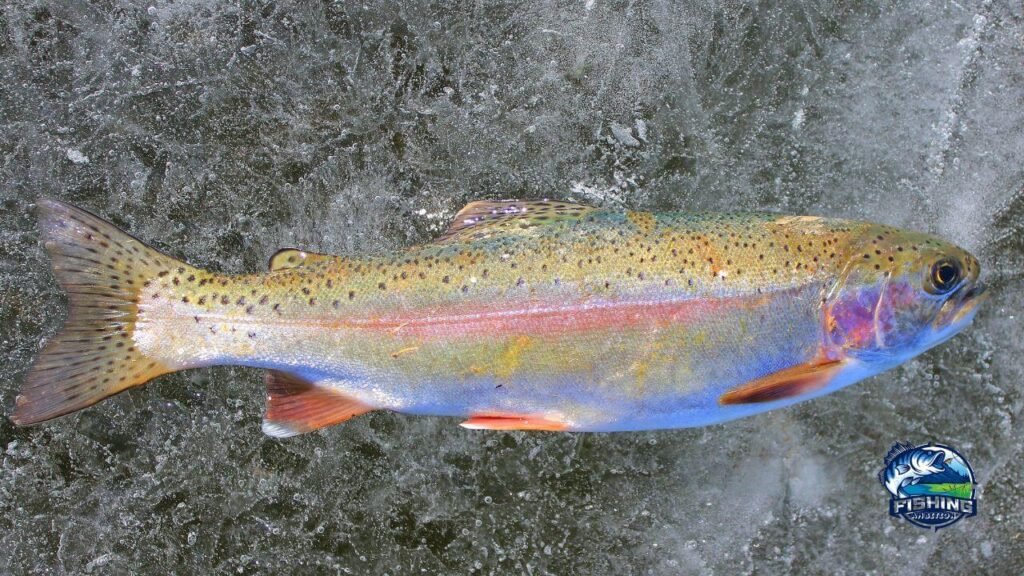
Rainbow Trout can grow to be quite large, up to 36 inches long, and are popular sports fish. Rainbow Trout are a type of native trout, meaning they have been present in an area for a long time and have evolved to live there.
They are well-adapted to cold water temperatures and can be found near areas of high rainfall or snowmelt. If you’re looking to go trout fishing, check out your local Department of Natural Resources website to find a list of nearby rivers and streams that are stocked with rainbow trout.
Cutthroat Trout
Cutthroat trout are a type of trout that is native to North America. They can be found in many different types of habitats, from cold, clear streams to warm, murky lakes.
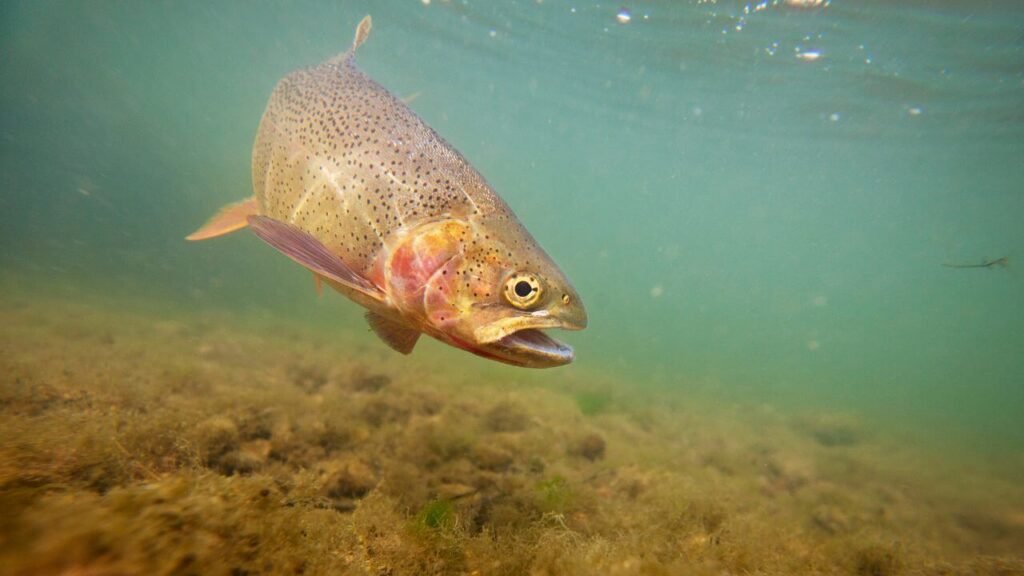
Cutthroat trout get their name from the distinctive red slash mark that they have under their lower jaw. This mark is used to help identify different types of cutthroat trout: there are 14 different subspecies of cutthroat trout, each with its own unique markings.
This shy species has striking red markings on their lower jaw that give them an appearance of always bleeding—and if you want to be doubly sure about what type your fishing line should have then look out because there will most likely be small black blotches or spots mainly found only over half-way up body length.
Golden Trout
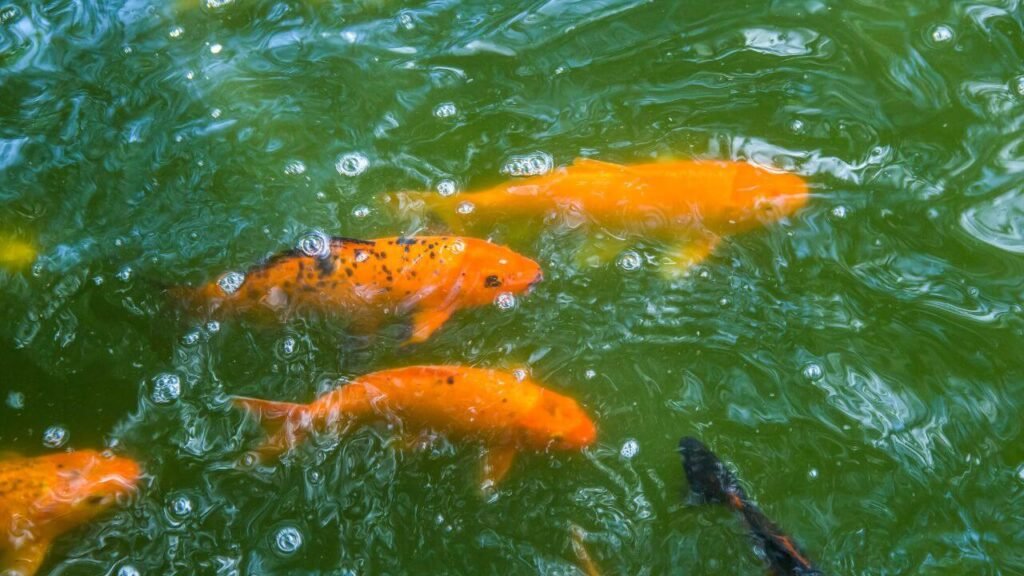
The Golden Trout is a subspecies of the Rainbow Trout and is native to California. They can be found in high-altitude lakes and streams in the Sierra Nevada mountains. Golden Trout are usually quite small, only growing to about 12 inches long.
They tend to live at higher altitudes, mostly within mountain streams or pools which makes them difficult for anglers without special equipment like rod rentals to access most areas where these fish can be caught easily- but if you live near trophy hunting grounds then there’s always hope!
Gila Trout
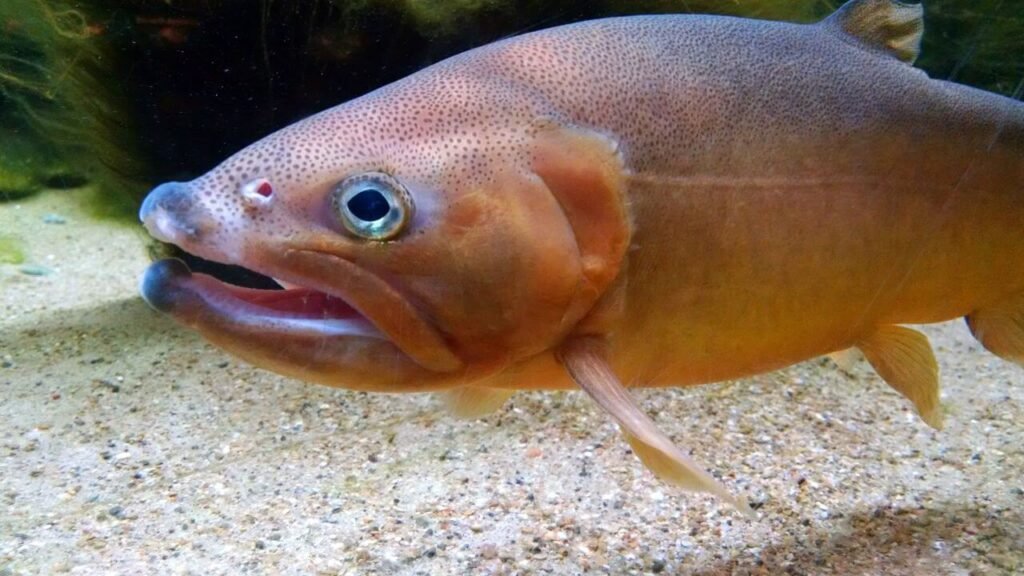
The Gila River in the Southwest United States is home to these once endangered and still threatened species of trout.
These fish can grow up 17 – 18 inches long, but most only get about 12″. You’ll find this race driver Gabilan yellowish brown gold copper color throughout New Mexico and Arizona.
The population levels for this species were reaching extremely low just ten years ago thanks largely due recovery efforts which have seen increases each year since then; we hope they can continue thriving!
Apache Trout
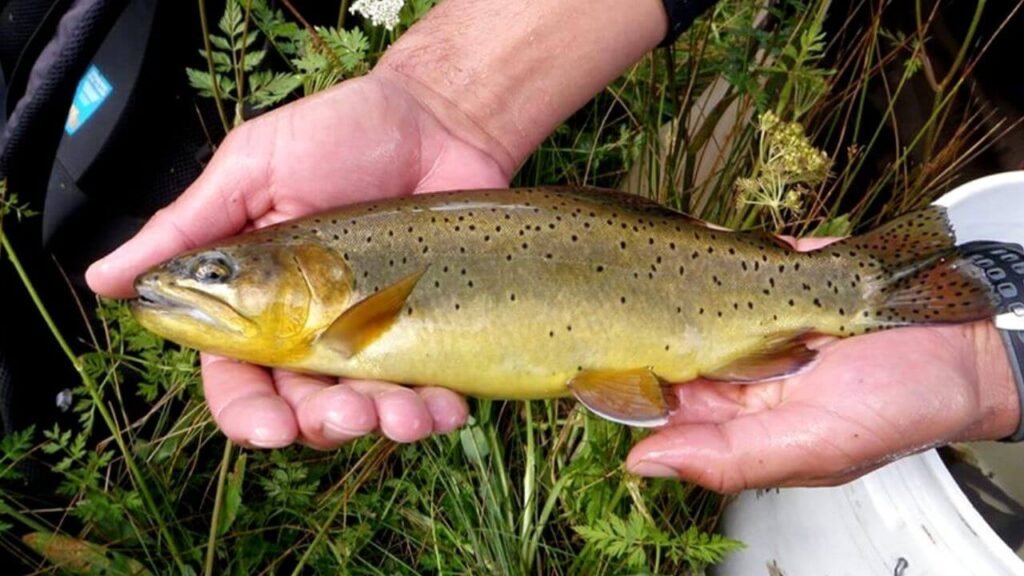
The Apache trout is a type of fish that is native to the southwestern United States. It can be found in streams and rivers in Arizona, New Mexico, and Colorado. The Apache trout is a threatened species and is protected by the Endangered Species Act.
Goldy-olive-colored trout that grow to be about 20 inches long are commonly found in small streams. They have a gold belly and can live up until they’re 3 years old.
This species reaches sexual maturity by age three and breeds during early spring when they deposit their eggs onto stones or other surfaces near water sources to start new generations – it’s important not only because there’s always room for more people, but also if we want our ecosystem remaining balanced without overfishing one kind too much.
Invasive Trout Species: European Trout
European trout are an invasive species of trout in North America. They were introduced to the continent in the late 1800s for sport fishing, and have since spread to many different rivers and streams.
European trout are aggressive predators and can outcompete native trout for food and habitat. They also carry diseases and parasites that can harm other fish.
If you catch a European trout, it’s important to remove it from the waterbody to prevent it from spreading further. You can do this by either killing the fish or releasing it live into a different body of water.
It’s also important to clean your gear after fishing, to prevent spreading any diseases or parasites that may be present on your equipment.
Brown Trout

Brown trout aren’t always brown. They can be golden or silver, depending on where they live and what coloration is most common in their environment at any given time – but don’t let this fool you!
Brown Trout has red-orange spots with rings of darker pigment around them that give it a salmon hue unlike anything else found within these parts (more closely related to Atlantic Salmon than other Trout). There’s plenty for anglers looking forward to: catch ’em near Lake Ontario; fishing success story waiting out there somewhere.
Brown Trout can be found in every corner of North America, from Ontario to Georgia and throughout the Great Lakes.
Char Trout: Confusing
Char trout are a type of fish that can be found in both freshwater and saltwater environments. They are closely related to salmon and have many of the same characteristics.
Char trout can be difficult to identify, as they can vary widely in appearance. Some char trout may look like rainbow trout, while others may resemble brown trout or even salmon. The best way to identify a char trout is by its teeth: char trout have large teeth that protrude from their mouths, while other types of fish do not.
If you catch a char trout, it’s important to check with your local fishing regulations to see if there are any restrictions on keeping or harvesting this species of fish.
Char trout are often considered invasive species, and catching and releasing them may be the best way to help protect native trout populations.
Lake Trout
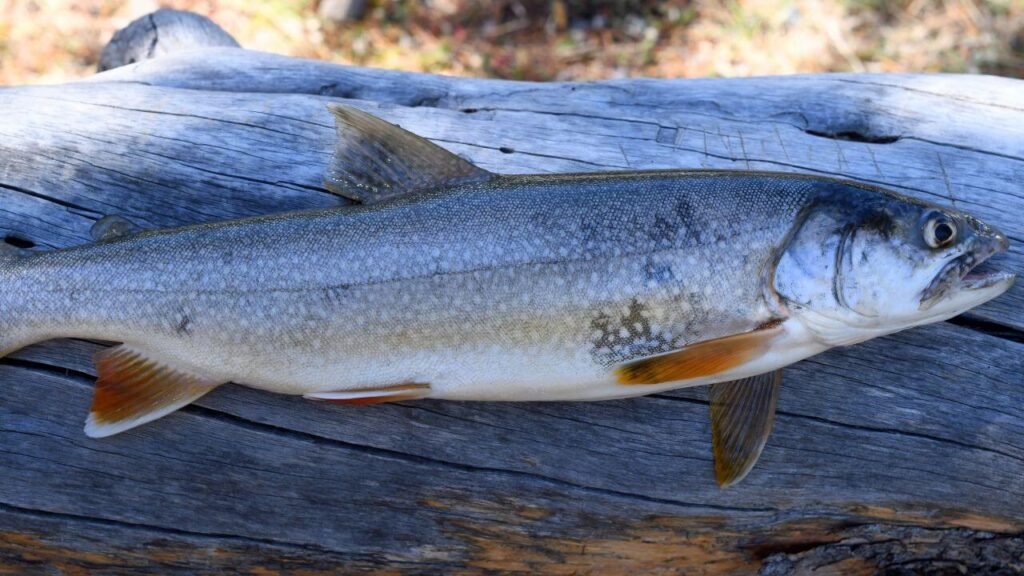
Lake trout are large cold-water fish that can grow to over 80 pounds. They have creamy spots and an unevenly forked tail like other species, but it’s their size that makes them easy to identify.
Lake Trouts average about half again as long and twice as thick compared with Pacific Coast cutthroat or brook trout (which both span between 6 – 12 inches).
The only real difference you’ll notice when looking at these competitors is the coloration; while some may have blackish bearing bars on light background shades.
Brook Trout
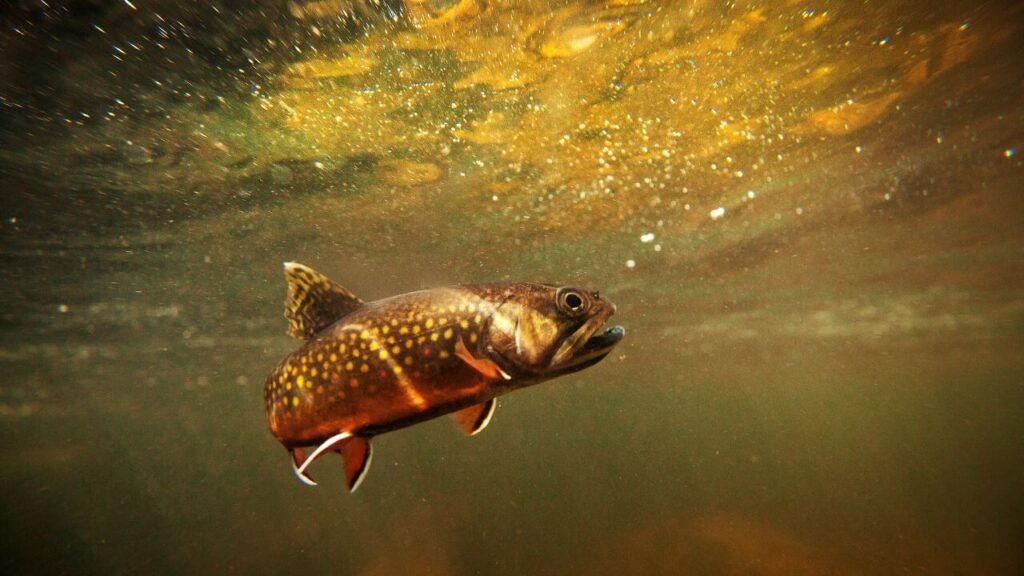
Brook trout are small, colorful fish that live in streams and lakes across North America. They’re often found at elevation waters where there’s plenty of oxygen to get them through their day–from mid-elevation mountains down below 3200 feet all the way up near Canada!
The color variations on these little guys can really pop: Some might be golden yellow or white with dark markings like worms; others may look more brownish though some do come bright pink.
The most obvious identifying feature is usually how differently shaped each individual organism appears compared to one another due largely.
Dolly Varden Trout
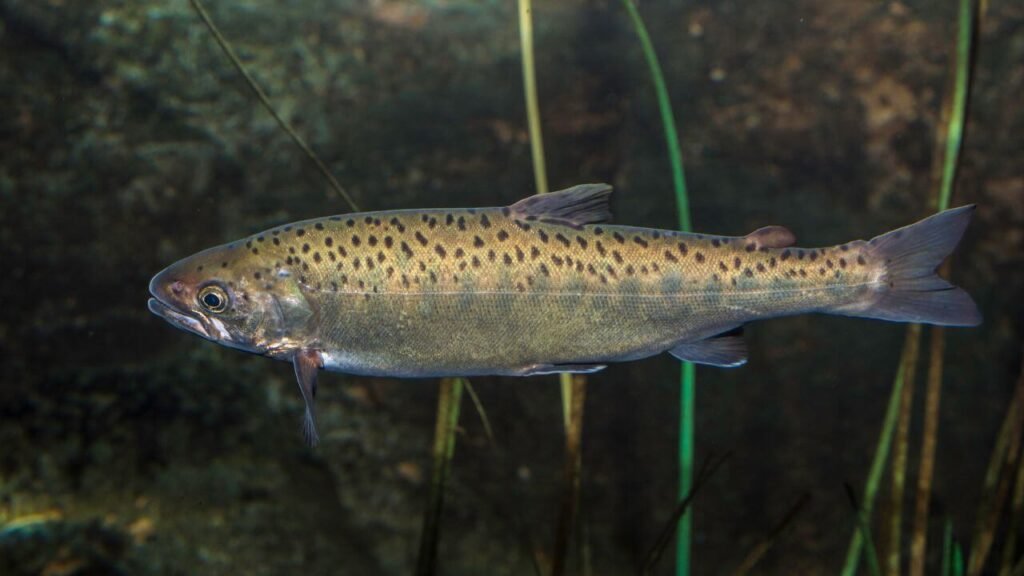
Dolly Varden trout are a type of fish that is native to North America. They’re a type of Char that went unnoticed for quite some time and then got called “trout” which is awesome!
They can be found in both freshwater and saltwater environments, and often travel between the two types of habitats.
Dolly Varden trout have a wide variety of coloration, depending on where they live. For example, Dolly Varden trout in Alaska often have brightly-colored bodies with dark spots, while those in British Columbia tend to be more dull-colored.
Bull Trout
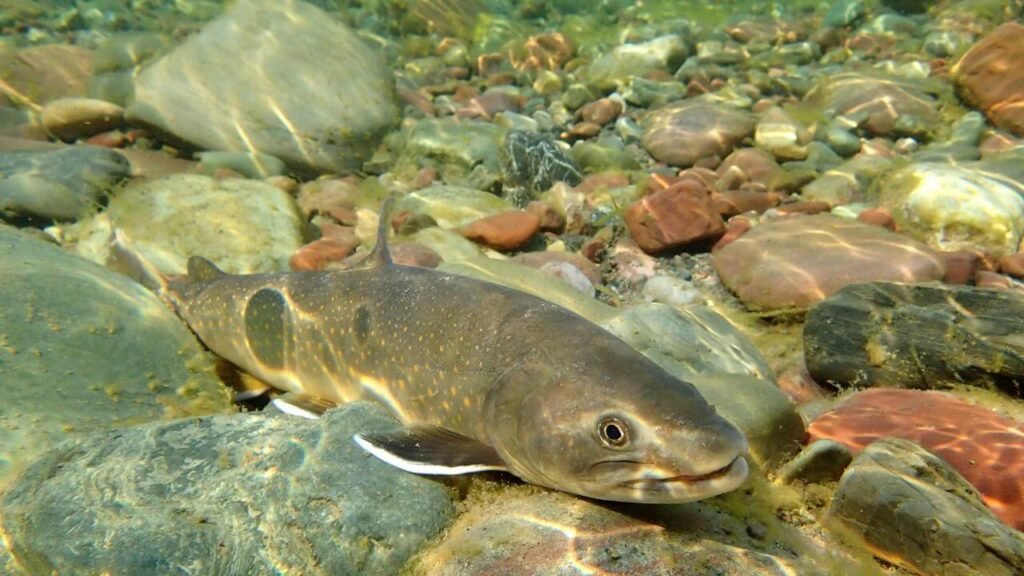
The bull trout is one of the rarest Salmonids in North America. They only live in large, cold rivers and drainages that are found exclusively on Vancouver Island or along its border with Alaska – the exception being when they venture south into California’s San Francisco Bay Area where their numbers seem limitless!
Just like their brothers; they can grow quite large up to 40 inches long but most commonly range between 25-30″. This means these fish have an extended lifespan too – often living 15 years.
Comparing them vs brook Trout isn’t too different other than location; though habitat listings do show a difference when it comes down to what type gets fixed here at home versus abroad – mostly due because many people think these fish don’t exist outside our borders.
Crossing Over: Hybrid Trout
Hybrid trout are a type of fish that is created when two different types of trout cross-breed. This can happen in the wild, or it may be done intentionally by humans for sport fishing or other purposes.
Hybrid trout can be difficult to identify, as they often have characteristics of both parent species. For example, a rainbow trout and brown trout hybrid may have the body shape of a rainbow trout but the spots of a brown trout.
If you catch a hybrid trout, it’s important to check with your local fishing regulations to see if there are any restrictions on keeping or harvesting this species of fish.
Hybrid trout are often considered invasive species, and catching and releasing them may be the best way to help protect native trout populations.
Tiger Trout
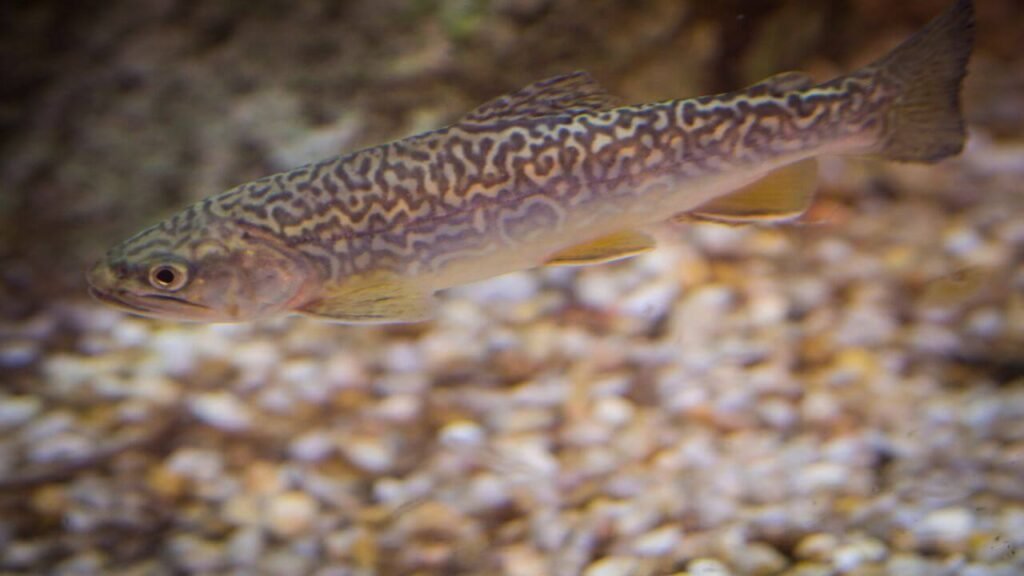
Tiger Trout is a hybrid fish, created by crossing male Brook Trout with female Brown Trout. They can be found in streams and lakes across North America. Tiger trout are usually quite large, up to 20 inches long!
The males look nothing at all like either parent – instead, they have an intense pattern consisting mostly of just one color across most parts of their bodies.
They have this dramatic pattern all over their body which makes them stand out among other types of trout species. This leads many sporting anglers to choose them as pets because you can see how strong the individual is without needing to actually catch them.
Splake
Splake is a hybrid fish that comes from crossing male brook trout and female lake trout.
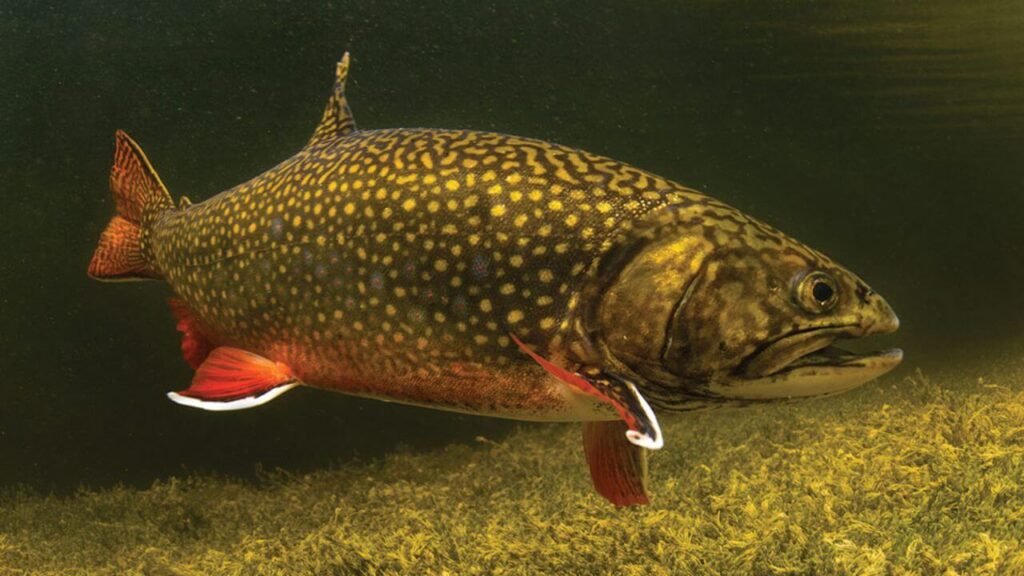
They tend not to reproduce efficiently in the wild, so they are normally bred by wildlife management groups for introduction as sportfishing around Georgian Bay or other regions where populations might be collapsing due to overfishing practices such as those found on Great Lakes shores today.
The average weight range sits between 2 pounds up towards 4 pounders (1-2 kg), but 20+ pound (9 kg) specimens do exist! As this population doesn’t really have any native ranges either–it was originally experimented with just trying to help out the fisheries across North America.
Maybe somewhere around Ontario where they’ve been stocked from efforts made at helping declining populations of brook trout along with other species like lake whites & experimental goldens.
Palomino Trout
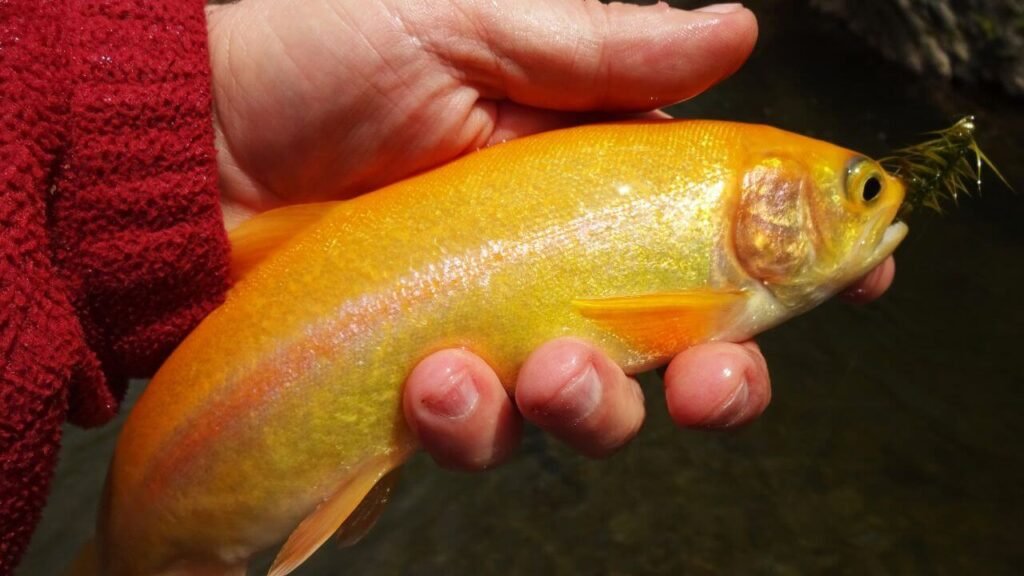
The Palomino trout is a hybrid bread in captivity originally from the 1950s. They are bright yellow/gold color and stand out as special, making them prized catch for any fisherman who finds one on their line (or hook).
Palomino trout is one of the most brightly colored rainbows, with golden stripes that stand out from other fish.
They can be found naturally in California but also across parts of Canada and North America where they’re bred commercially for their coloration- which makes them popular among anglers looking to catch something special while fishing on waterways or lakes!
Where to Find Trout
Trout can be found in cold-water rivers and streams all over the world. In North America, trout are most commonly found in the northern United States and Canada. Trout prefer cold water temperatures, and can often be found near areas of high rainfall or snowmelt.
If you’re looking to go trout fishing, check out your local Department of Natural Resources website to find a list of nearby rivers and streams that are stocked with trout. You can also find information on fishing licenses and regulations.
Native vs. Introduced vs. Invasive Species: What’s the Difference?
There are three main types of trout: native, introduced, and invasive. Native trout are those that have been present in an area for a long time and have evolved to live there. Introduced trout are those that have been brought to an area from another location, often for sport fishing or other purposes. Invasive trout are those that have been introduced to an area and have spread rapidly, often causing harm to the local ecosystem.
If you’re interested in fishing for trout, it’s important to know which type of trout is present in the waterbody you’re planning to fish. Check with your local Department of Natural Resources or Fish and Wildlife agency to find out more information on the types of trout present in your area.
Final Thoughts
Hopefully, this guide has helped you to better understand the types of trout that can be found in North America.
This guide should help you to identify the different types of trout that you may encounter while fishing.
Remember to always check local fishing regulations before keeping or harvesting any fish, to help ensure the sustainability of native trout populations. Thanks for reading!
Have you caught any interesting-looking trout lately? Feel free to share a photo in the comments below! Happy fishing!



